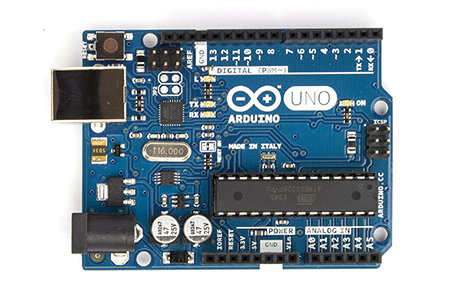| title | title_expanded | categories | subCategories | ||
|---|---|---|---|---|---|
Entity Title |
Less Than or Equal To |
|
|
Writes an analog value (PWM wave) to a pin. Can be used to light a LED at varying brightnesses or drive a motor at various speeds. After a call to analogWrite(), the pin will generate a steady square wave of the specified duty cycle until the next call to analogWrite() (or a call to digitalRead() or digitalWrite() on the same pin). The frequency of the PWM signal on most pins is approximately 490 Hz. On the Uno and similar boards, pins 5 and 6 have a frequency of approximately 980 Hz.
analogWrite(pin, value)
pin: the number of the pin to write to. Allowed data types: int.
value: the duty cycle between 0 (always off) and 255 (always on). Allowed data types: int.
Nothing
Sets the output to the LED proportional to the value read from the potentiometer.
int ledPin = 9; // LED connected to digital pin 9
int analogPin = 3; // potentiometer connected to analog pin 3
int val = 0; // variable to store the read value
void setup() {
pinMode(ledPin, OUTPUT); // sets the pin as output
}
void loop() {
val = analogRead(analogPin); // read the input pin
analogWrite(ledPin, val / 4); // analogRead values go from 0 to 1023, analogWrite values from 0 to 255
}This is because of interactions with the millis() and delay() functions.
